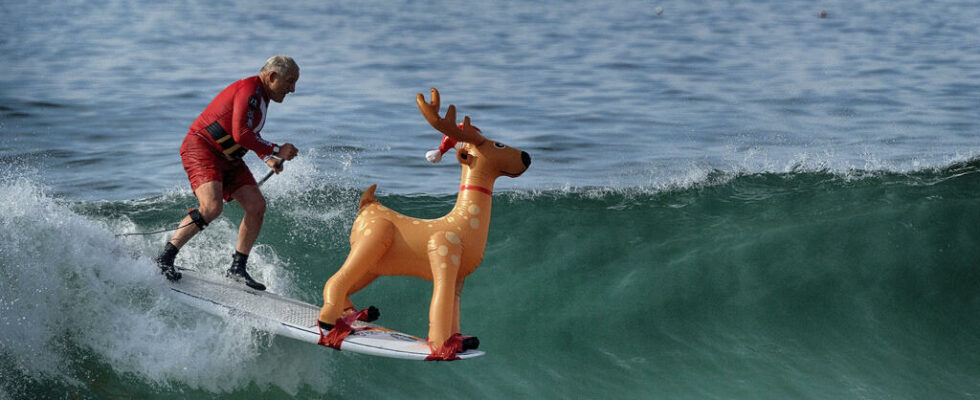During the Christmas holidays, Santa Claus leaves the North Pole on his annual gift distribution tour. What is the environmental impact of this tour? Because if we apply certain calculations, his journey has a heavy carbon footprint.
3 mins
Is the Santa Claus tour ecological? RFI’s environment-climate department investigated. It was first necessary to calculate the number of presents carried by Santa Claus during his tour, then the weight of the sleigh and finally the energy required to move it.
It is difficult to find precise statistics, but it seems that on average globally, each child receives 5.5 presents for Christmas, although there are obviously wide variations between countries. Likewise, the data is not precise, but the commonly accepted estimate identifies 135 million spoiled children on the planet.
If we arbitrarily define an average mass per gift of one kilogram, we can therefore estimate the mass TM of the sled according to:
MT = 5.5*1*13.5.106.
We thus find that TMthe mass of the sleigh, is equal to 742,500 tonnes of gifts to transport. We will not include the weight of Santa Claus, the reindeer and the sleigh itself for the rest of the calculations, which are negligible compared to this colossal mass.
To know the energy AND deployed to move such a load, we will use the following formula:
AND= 1/2MT.VT2 Or TM is therefore the mass of the sled and VT its speed. To obtain the latter, you must determine the distance covered by Santa Claus during his tour, and the time spent completing it according to: VT = D/T
To calculate Dwe will once again carry out several approximations: we consider siblings to obtain 50 million visited households. We then arbitrarily establish that they are homogeneously distributed across the planet. We thus obtain D = 149 million kilometers.
As for the calculation of T, you must take the maximum nighttime duration that Santa Claus can benefit from. By taking into account the rotation of the Earth, the gift drop-off breaks, we thus obtain T = 42 hours.
We therefore obtain:
VT=149.106 / 42 or VT = 3,547,691 km/h.
To obtain the result in kilometers per second:
VT = 3,547,619 / 3600either VT = 985 km/s either VT= 985,000 m/s.
Equipped with VT, the speed of the sled, so we can now calculate AND, the energy deployed to move this formidable mass at such speed.
AND = 1/2(742 500 000*985 0002) = 3.6.1020J.
The kinetic energy of the sled is thus equivalent to 360 Peta Joules or 360 quadrillion joules. This is the equivalent of 100 terawatt hours (TWh), roughly speaking… there consumption world energy in 2001.
What do reindeer fuel?
Excluding magic, to obtain such consumption, we could connect 62,500 EPR-type nuclear reactors to the nose of Rudolf the reindeer during his 42-hour mission. This would explain, by the way, his red nose to mean that he is discharged.
To know the carbon dioxide equivalent emissions of the team, not knowing by definition the consumption of nine reindeer traveling at 985 km/s for 42 hours, we will make an analogy with real vehicles. The sled weighs as much as 400,000 SUVs. For consistency, let’s assume that they run on biofuel. We then arrive at 19.2 billion tonnes of CO2 emitted on Santa’s route.
It is commonly accepted that the latter lives in Lapland. Finally, we compare this figure to the annual carbon footprint of a resident of the Finland. As a first approximation, we discover that Santa Claus emits in one long night of work as much as three billion Finns in one year.
